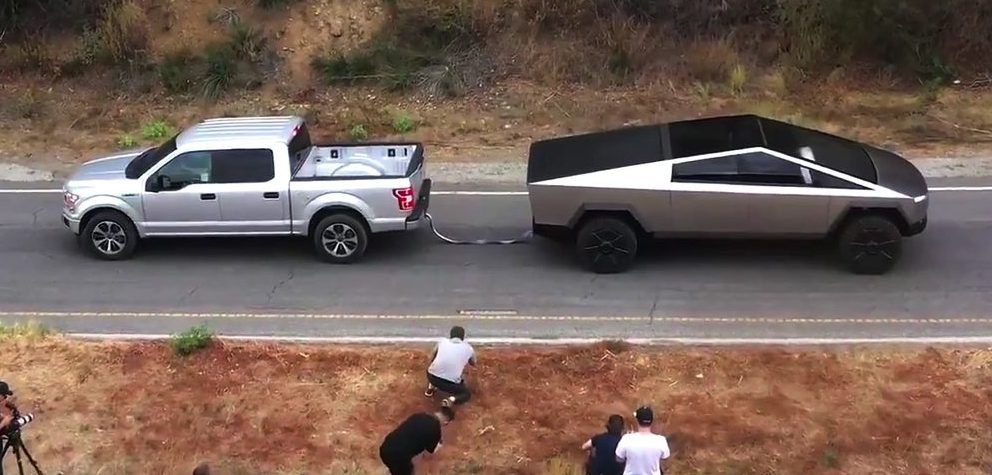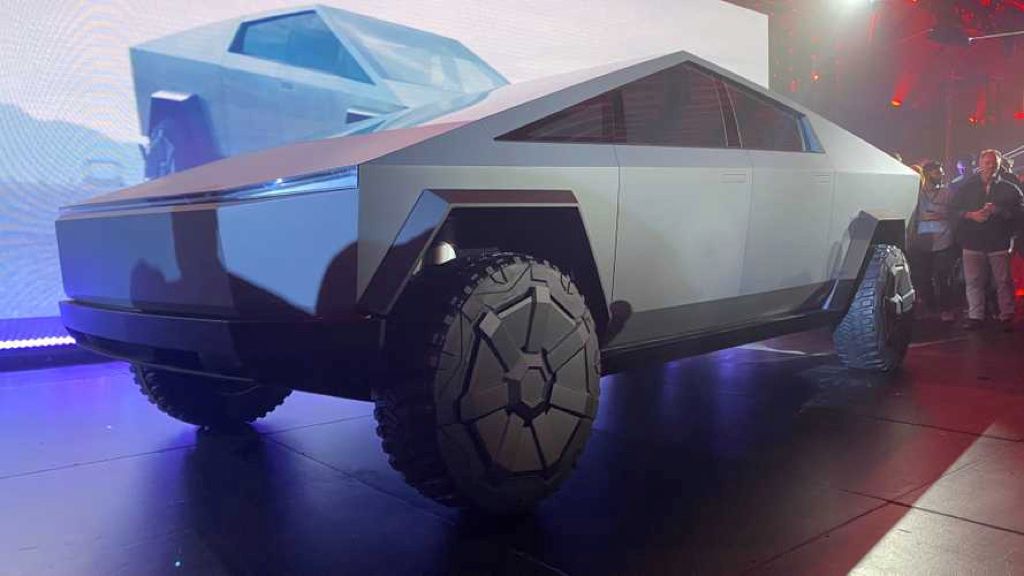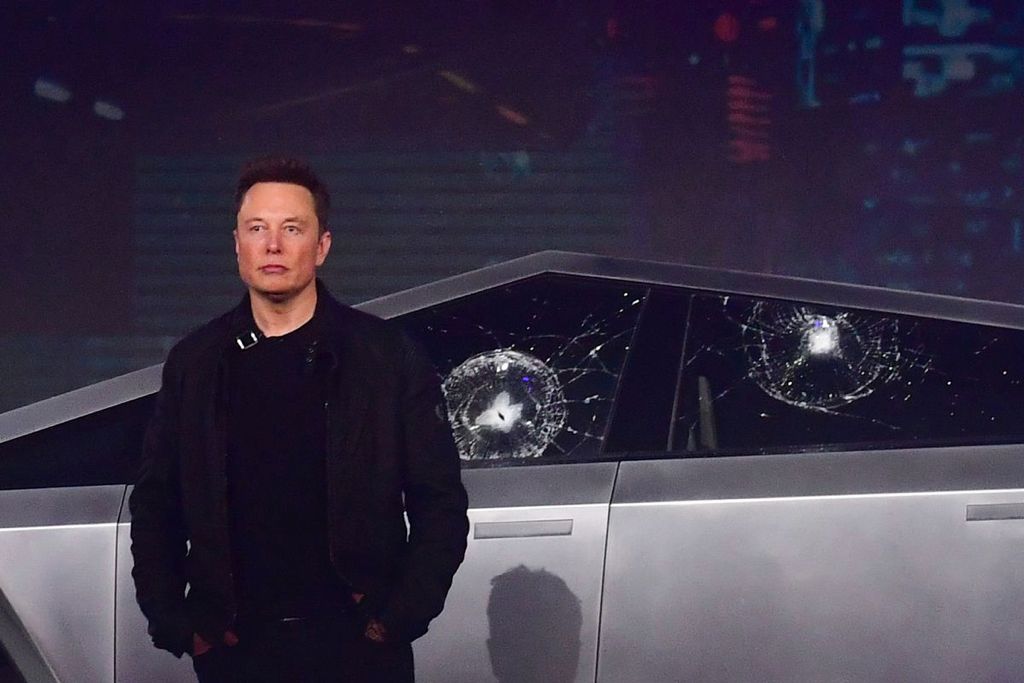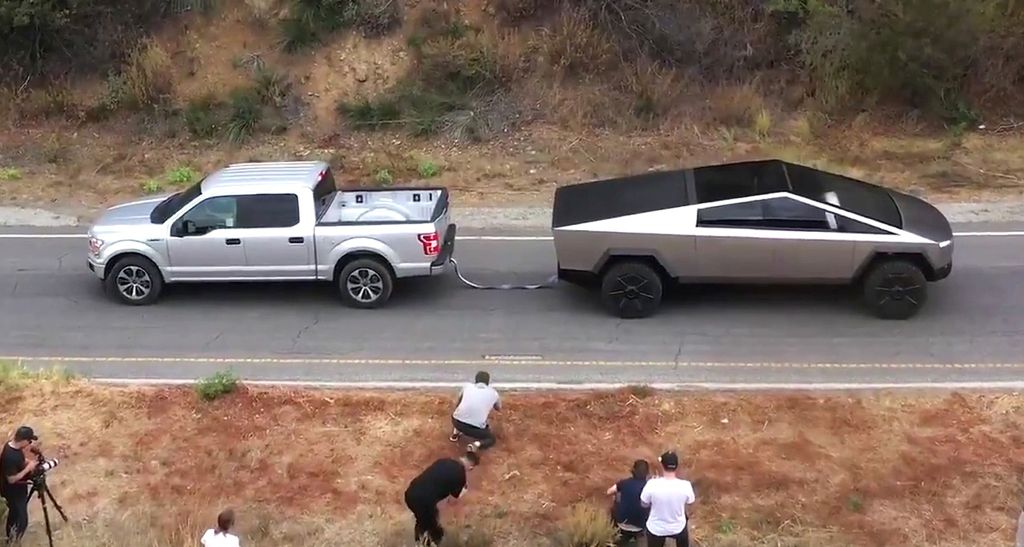There’s no denying that Tesla founder Elon Musk has made a seismic splash in space transport (with SpaceX), solar power and electric vehicle technology. Now, the peripatetic entrepreneur’s latest effort takes aim at the very heart of the American vehicle industry: the light-duty pickup truck, and specifically the country’s best-selling vehicle, the Ford F-150.
Musk’s dramatic unveiling of the deeply angular all-electric Cybertruck during the 2019 Los Angeles Auto Show was equal parts bravado and bust … literally, if you take into account that ill-advised Armor Glass demo. But the potential of the Cybertruck was impressive enough for 250,000 people to pay $100 (refundable) to reserve a truck more than a year before its scheduled on-sale dates. So, should you get ready to trade in your F-150 now? Before you click the button, here are some things to consider.
3 Bang For The Buck
First of all, the truck on paper seems like a game-changer: a choice of three all-electric powertrains (two with all-wheel drive) and Tesla’s full suite of in-car technology (including available self-driving mode), wrapped in a futuristic “exo-skeleton” body with an integral covered bed and optional towing capacity exceeding 14,000 pounds, all for a price Tesla says will start just under $40,000US, or about the MSRP of an F-150 XLT SuperCrew.
Of course, how quickly you might get that new Cybertruck may depend on how much money you’re spending. Tesla says it’s changed its production timetable based on its pre-orders, pushing forward production of the more expensive dual- and tri-motor models. The “base” rear-drive truck is now not expected to begin production until 2022. And that assumes Tesla can make its timetables: the company missed initial targets on its most recent rollout, the Model 3, though deliveries have been strong through 2019.
2 Damage-Proof Windows
You may also have questions about some controversial demonstrations of the truck. For instance, the entire Internet has seen what happened when Tesla chief designer Franz von Holzhausen smashed the truck’s allegedly damage-proof side windows, to Musk’s apparently profane shock. His after-the-fact explanation — that von Holzhausen taking a sledgehammer to the driver’s door earlier cracked the base of the glass — may not be especially comforting.
1 Exaggerated Towing Demonstration
Several days later, Musk Tweeted a video that appears to show a tri-motor AWD Cybertruck dragging an F-150 in a towing contest. Impressive, right? Well, eagle-eyed observers pointed out (for Car and Driver and others) that the F-150 in question appeared to be a rear-drive XLT that weighs about 4,000 pounds less than the 9,000-pound Tesla prototype. You don’t need to know Newton’s Second Law of Motion (force = mass x acceleration) to understand why that’s an unfair fight.
Another consideration, depending on where you live, is Tesla’s sales and service footprint. If an F-150 needs service, the owner can take it to any one of about 3,000 Ford dealers across the country, secure in the knowledge that they’ll probably be able to fix it. By comparison, Tesla has just 80 dealers and “galleries” across the country, and its adherence to a direct-sales model means the company by law is banned from setting up formal dealerships in 16 states ... including the epicenter of the truck world, Texas.
Here’s one more thing to consider: By the time the first Cybertrucks are plying American roads, Ford may have an all-electric F-150 of its own to sell, with a powertrain that may be derived from its technology partner Rivian. A recent demo showed a prototype electric F-150 pulling what Ford says is a million pounds' worth of boxcars carrying other F-150s.
Ultimately, trading in your F-150 for a Cybertruck may be an easy decision, based on your location and price point … but it’s clear that the splashy Tesla truck has accelerated the arms race among truck makers to get to market … and prospective owners will be the winners.




